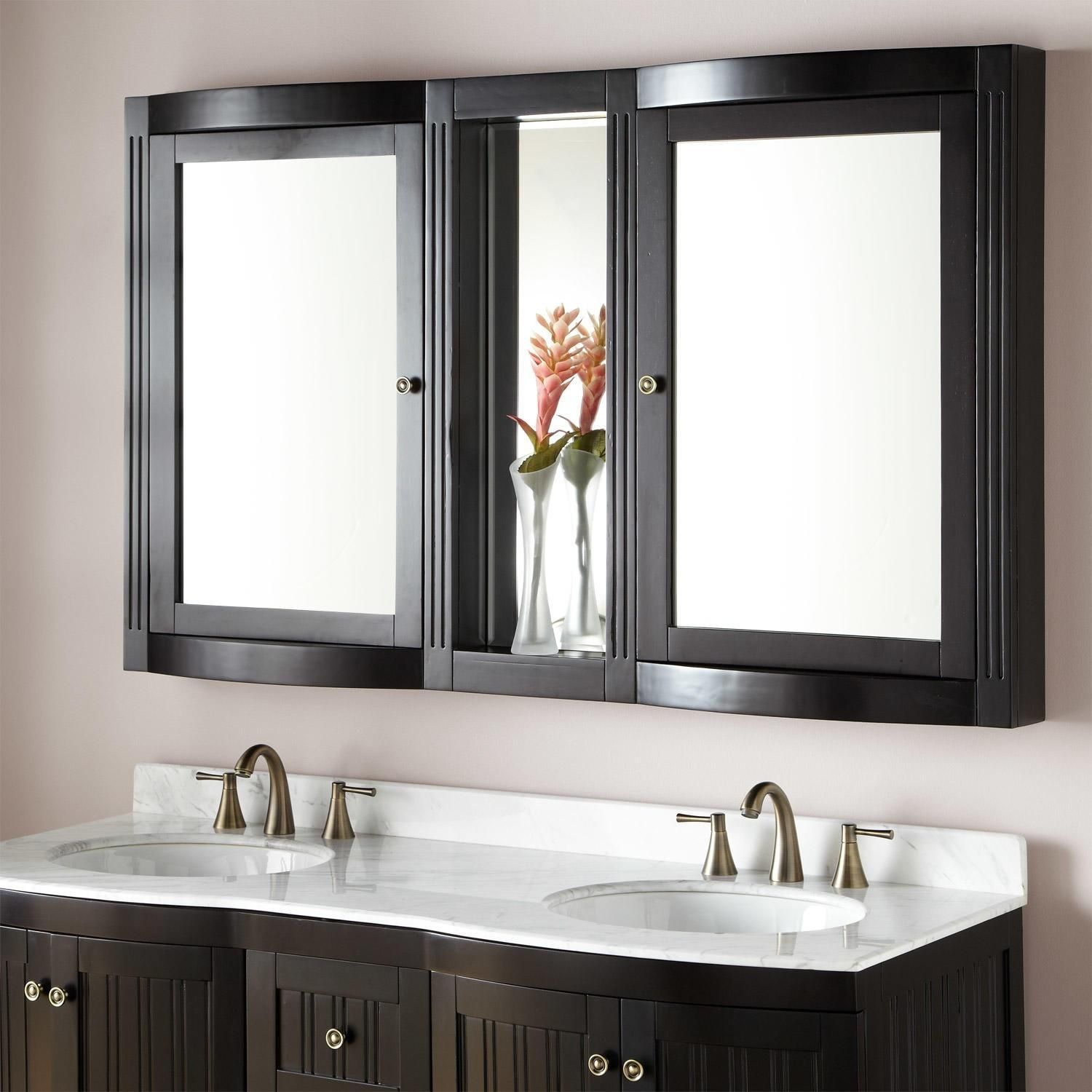The Evolution of Bathroom Medicine Cabinets: Traditional Bathroom Medicine Cabinets

The bathroom medicine cabinet, a seemingly mundane fixture, has undergone a fascinating evolution, mirroring the changing needs and aesthetics of homeowners over the centuries. From its humble beginnings as a simple storage solution to its modern-day incarnations as a stylish and functional element, the medicine cabinet’s journey reflects the evolving priorities of bathroom design.
Traditional Medicine Cabinets
Traditional medicine cabinets, often characterized by their simple, rectangular design, have been a staple in bathrooms for decades. These cabinets, typically made of wood or metal, were designed to provide a discreet and readily accessible space for storing toiletries, medications, and other bathroom essentials. Their compact size and recessed placement allowed them to blend seamlessly into the bathroom’s decor, while their mirrored doors offered a practical and decorative element.
The Rise of Mirrored Cabinets, Traditional bathroom medicine cabinets
The emergence of mirrored cabinets marked a significant shift in bathroom storage design. Mirrored cabinets, featuring large, reflective surfaces, provided a more spacious and visually appealing alternative to traditional cabinets. They offered a sense of openness and enhanced the bathroom’s lighting, creating a brighter and more inviting atmosphere. Mirrored cabinets also provided ample storage space, accommodating a wider range of bathroom necessities.
Over-the-Counter Storage Solutions
The advent of over-the-counter storage solutions introduced a new level of flexibility and customization to bathroom organization. These solutions, encompassing a wide range of designs and materials, provided homeowners with greater control over their bathroom’s storage needs. From sleek and modern shelves to rustic baskets and organizers, over-the-counter storage offered a diverse array of options to suit various styles and preferences.
Changing Needs and Preferences
The evolution of bathroom medicine cabinets reflects the changing needs and preferences of homeowners. With the increasing emphasis on functionality and aesthetics, homeowners are seeking storage solutions that are both practical and stylish. The desire for larger, more organized storage spaces has led to the popularity of mirrored cabinets and over-the-counter storage solutions. Additionally, the growing demand for eco-friendly and sustainable materials has influenced the design and production of bathroom storage solutions.
Modernizing Traditional Medicine Cabinets

The charm of traditional medicine cabinets lies in their timeless elegance and classic design. However, as modern bathrooms evolve, incorporating sleek and functional elements, the need to modernize these cabinets becomes apparent. This modernization process involves infusing contemporary features into the traditional design, enhancing functionality, and creating a cohesive aesthetic that complements contemporary bathroom designs.
Innovative Modernization Techniques
Modernizing traditional medicine cabinets involves incorporating innovative techniques that enhance functionality and aesthetics. These techniques aim to blend classic appeal with contemporary features, creating a harmonious balance between tradition and modernity.
- LED Lighting: Replacing traditional incandescent bulbs with energy-efficient LED lights enhances visibility within the cabinet. LED lights offer a brighter and more even illumination, making it easier to locate items. Additionally, they are more durable and consume less energy, contributing to a sustainable bathroom environment.
- Mirrored Doors: Mirrored doors enhance the visual appeal of the cabinet while adding a sense of spaciousness to the bathroom. Mirrored surfaces reflect light, making the space appear larger and brighter. This effect is particularly beneficial for smaller bathrooms, where maximizing visual space is crucial.
- Custom Shelving: Traditional medicine cabinets often come with fixed shelves, limiting storage options. Incorporating custom shelving allows for tailored storage solutions based on individual needs. This can include adjustable shelves, pull-out drawers, and specialized compartments for items like medications, toiletries, and cosmetics.
Designing a Modernized Traditional Medicine Cabinet
Designing a modernized traditional medicine cabinet requires a careful balance between preserving its classic appeal and incorporating contemporary features. This involves selecting materials, finishes, and hardware that reflect both styles.
- Material Selection: Traditional medicine cabinets are often made from wood, while modern cabinets may incorporate materials like metal, glass, or acrylic. Combining these materials can create a unique and contemporary look while maintaining the classic appeal of the cabinet. For instance, a wood cabinet with a mirrored glass door and metal accents would create a balanced and stylish design.
- Finish Selection: The finish of the cabinet plays a significant role in its overall aesthetic. Traditional cabinets often feature a stained or painted wood finish, while modern cabinets may have a sleek, minimalist finish. Choosing a finish that complements the bathroom’s overall design is essential. For instance, a white cabinet with chrome hardware would complement a modern bathroom, while a dark wood cabinet with brass hardware would fit a more traditional setting.
- Hardware Selection: Hardware details like handles, hinges, and knobs contribute significantly to the cabinet’s aesthetic. Modern hardware is often sleek and minimalist, while traditional hardware features intricate designs and ornate details. Choosing hardware that reflects the desired style is crucial. For instance, a contemporary medicine cabinet could feature sleek, brushed nickel handles, while a traditional cabinet could have ornate brass knobs.
Comparing Modernization Techniques
The table below compares different modernization techniques, highlighting their impact on functionality and aesthetics.
| Modernization Technique | Functionality | Aesthetics |
|---|---|---|
| LED Lighting | Improved visibility, energy efficiency | Contemporary look, enhanced brightness |
| Mirrored Doors | Enhanced visual space, increased reflectivity | Sleek and modern, creates a sense of spaciousness |
| Custom Shelving | Tailored storage solutions, increased organization | Contemporary look, personalized storage options |
